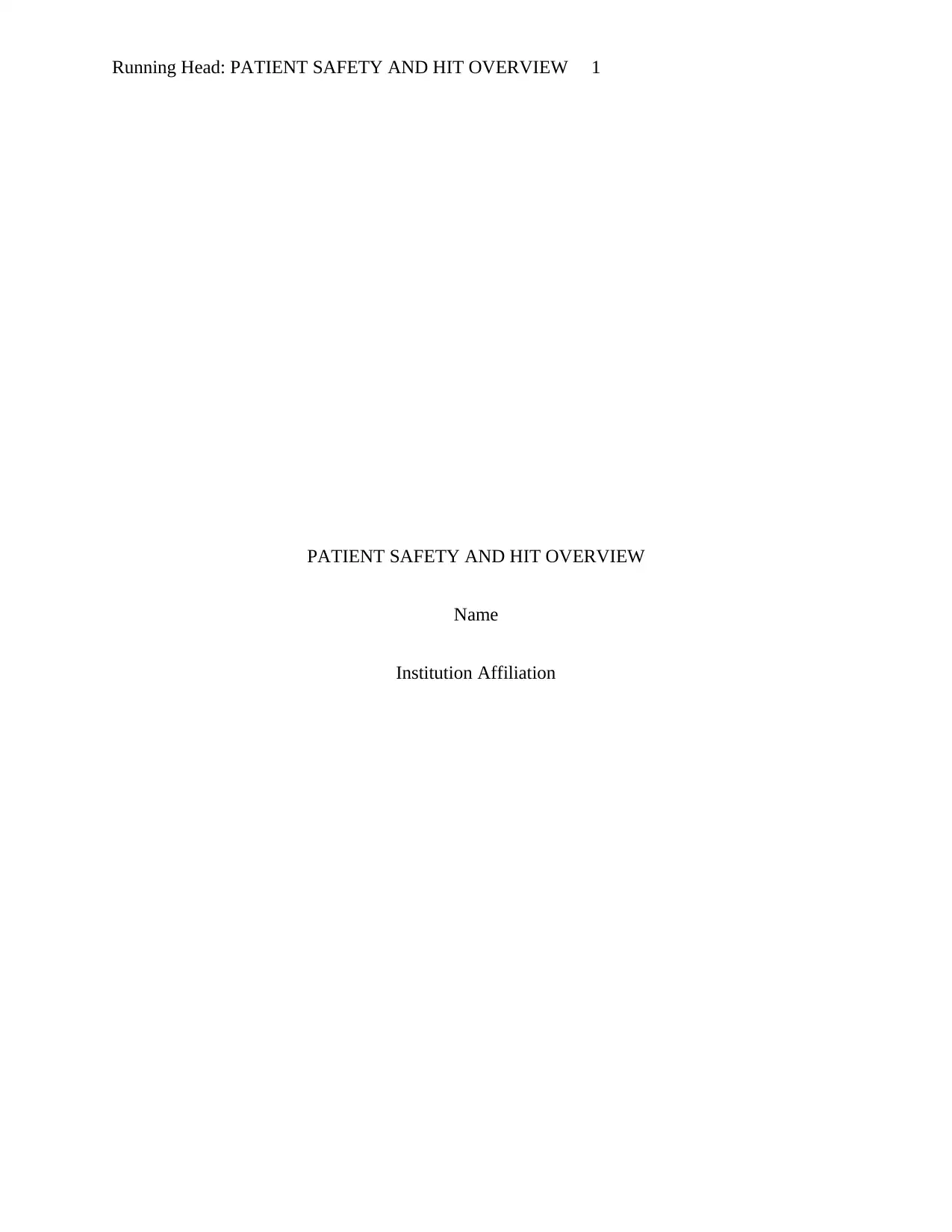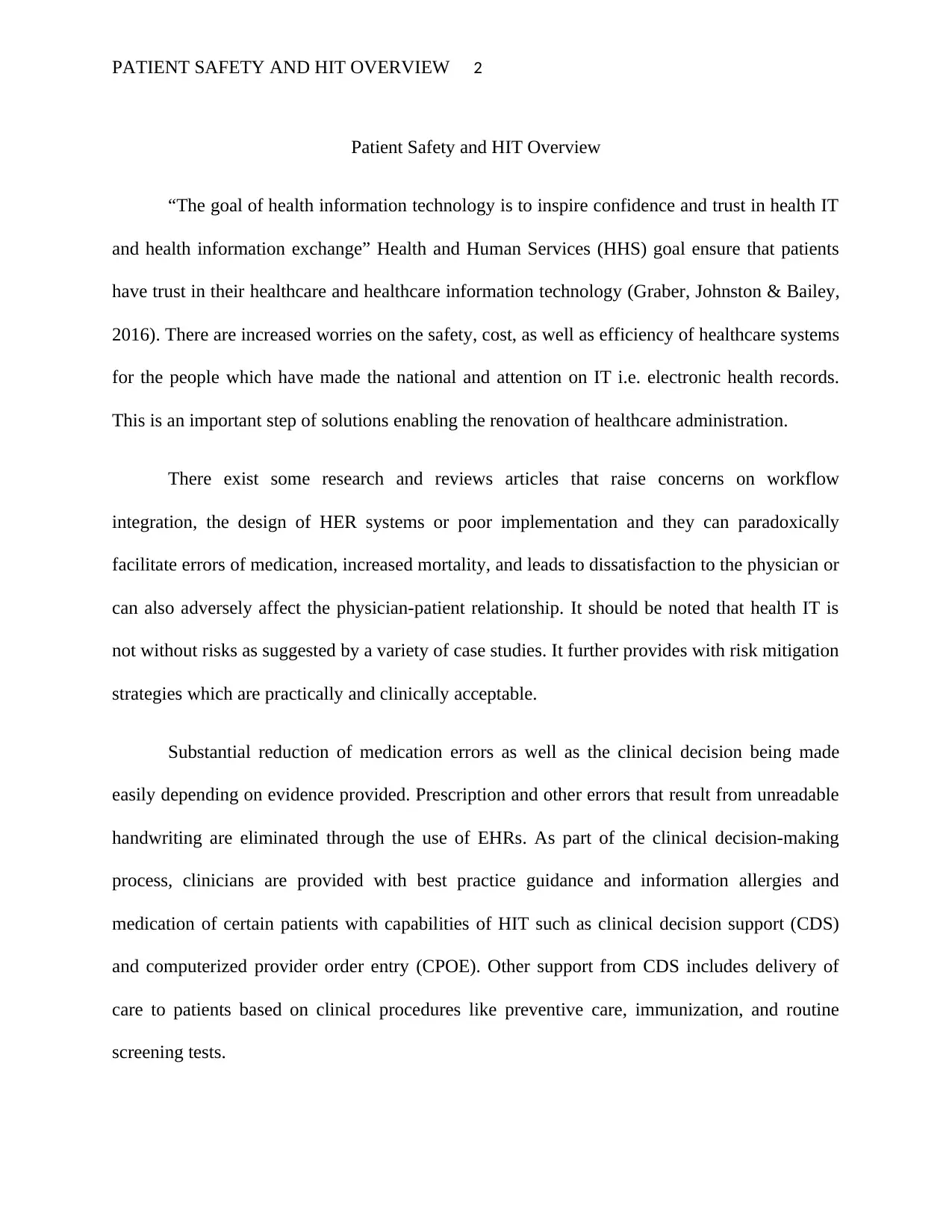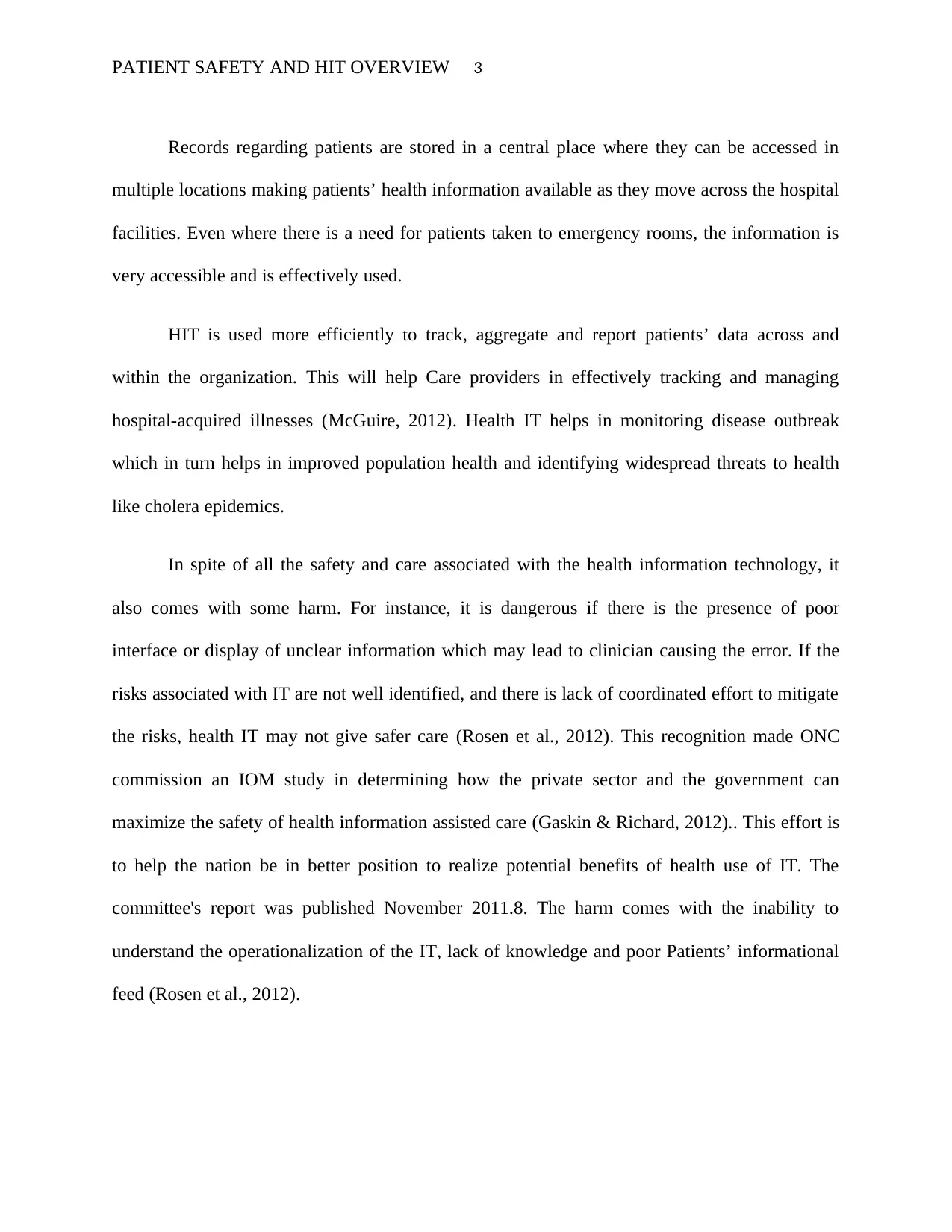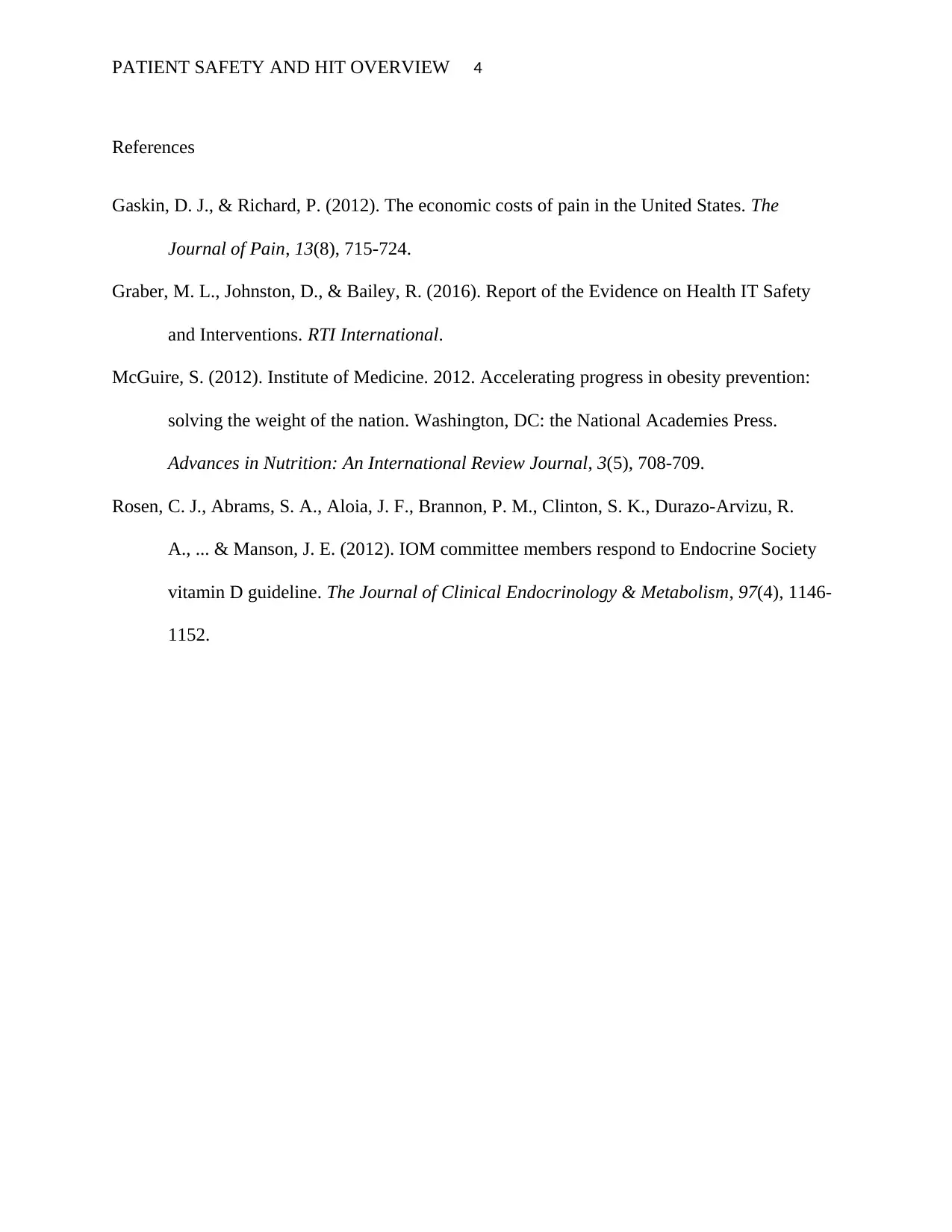Health Information Technology: Improving Patient Safety Outcomes
VerifiedAdded on 2023/06/11
|4
|813
|390
Essay
AI Summary
This essay provides an overview of patient safety in relation to health information technology (HIT). It highlights the dual nature of HIT, acknowledging its potential to enhance patient safety through features like electronic health records (EHRs), clinical decision support (CDS), and computerized provider order entry (CPOE), which can reduce medication errors and improve clinical decision-making. However, it also addresses the risks associated with HIT, such as poor interface design, unclear information display, and inadequate training, which can lead to errors and adverse effects. The essay references studies and reports emphasizing the importance of identifying and mitigating these risks to fully realize the benefits of HIT in healthcare, with a focus on improving care coordination, tracking diseases, and promoting population health.
1 out of 4











![[object Object]](/_next/static/media/star-bottom.7253800d.svg)